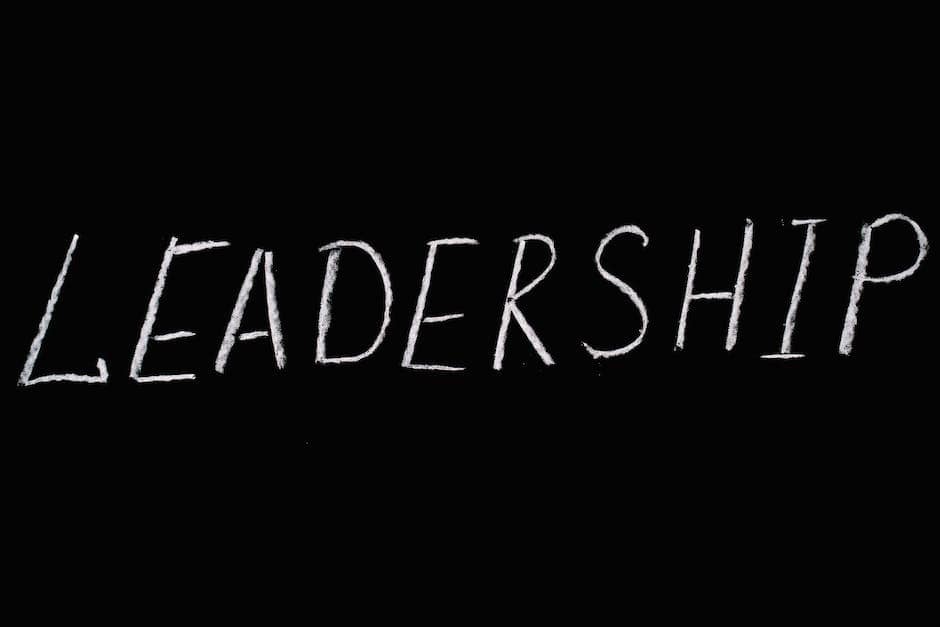The dynamic nature of today’s business environment necessitates regular and strategic shifts in organizational function and structure.
At the proverbial helm of these shifts are the leaders of the organization who play an instrumental role in these change management efforts.
This quintessential evaluation explores the multi-faceted construct of leadership in shaping and navigating organizational change.
From understanding different leadership styles and their influence on change management to the in-depth role of communication, this discourse holistically examines the application and impact of leadership in change management.
The exploration is further enriched with real-life case studies, providing a pragmatic context to the first-hand effectiveness of commendable leadership during change management.
Understanding Leadership Styles
Shifting organizational landscapes demand effective change management methods, and leadership styles tend to play a pivotal role. Each organization’s success isn’t standalone – it’s hooked to the caliber of its leadership which often determines the effectiveness of the change management process. So, let’s unwrap the layers connecting diverse leadership styles to change management.
Change, the only constant, summons two aspects – either perish under its weight or surf atop its wave. The power to shift between these extremes rests in the hands of leaders. Leaders mold, experiment, disrupt, and master tactics that feed an organization’s soul. The right blend of direction and decision-making can transform passive followers into invested stakeholders.
Start with the autocratic leadership style. One who takes charge, makes decisions without consultation, and stands by them – their choices sculpt organizational change. With such leadership, change can be swift and guided by a robust vision, albeit could potentially suffer from a lack of employee buy-in, as the voice and foresight of employees get overlooked.
Next, let’s weave through the democratic leadership style. In a democratic setting, change is a shared vision. The leader facilitates a podium where all voices blend to form a symphony. It’s collaborative and participative. This style aids change management by fostering a sense of ownership among employees, hence reducing resistance to change. However, decision-making and changes might be slow and could risk being less strategic.
Transformational leadership forms the lynchpin for change management. These leaders challenge the status quo and reinvent norms to extract their team’s potential. They induce a visionary change that redefines the organizational fabric. Strong transformational leaders inherently foster innovation and agility – the core ingredients for successful change management.
Laissez-faire leadership is a hands-off approach where employees are given a free reign. This style may seem a great fit for fostering creativity and innovation. But when it comes to change management, the lack of direction and accountability can breed chaos and confusion, derailing the organization amidst transition.
In navigating the tide of changes, transactional leadership, founded on structured rewards and penalties, devises a predictable environment – highly beneficial in stressful transitional periods. Yet, over-reliance on this system can restrain innovation and limit flexibility – essential ingredients for thriving in a changeable business landscape.
To pin it down, the potency of change management doesn’t lie in preferring one leadership style over another. Success blooms in the versatile adaption of various styles depending on the organization’s unique needs and the specific context of change. Leadership’s fluidity to shift gears between autocratic, democratic, transformational, laissez-faire, and transactional styles welds the strength of change management.
Remember, organizations don’t resist change. People do. And the response of people to change is often a reflection of leadership. Hence, leaders must shoulder the responsibility of guiding this journey, making each twist and turn count. With the power to foster change management resting in their hands, leaders must understand and strategically employ their style to craft their organization’s success narrative. The future of our businesses depends on it.

The Role of Leadership in Change Management
Championing Change: Leadership’s Role in Driving Business Evolution
Any entrepreneur with a keen eye for market trends understands that change is the heartbeat of business evolution. The ability of those at the helm, the business leaders, to skillfully conduct change is what differentiates disrupted companies from disruptive ones. With a deep understanding of how leadership styles affect change, let’s dig into the essential roles that leaders play in facilitating change within a business setting.
One pivotal function of a leader is to construct an inspiring vision for change. An element often overlooked in autocratic and transactional modes of leadership, is the ability to create an aspirational future state that drives organizational transformation. Whether it’s pivoting to a new business model or rolling out advanced digital solutions, leaders must not only articulate the ‘what’ but deliver an empowering ‘why’ that spearheads motivation and engagement.
As catalysts for change, leaders serve as enablers, fostering a culture of innovation. In comparison to the laissez-faire style, they actively encourage divergent thinking, employee autonomy, and calculated risk-taking. This approach expands the organization’s capacity for change, driving business ingenuity and out-of-the-box solutions.
Beyond innovating the ‘what’, leaders are also the architects of the ‘how’. Crafting effective change strategies requires business savvy, familiarity with industry trends, and a wide professional network. Leaders provide direction, set priorities, allocate resources, and design the roadmap — illuminating the path to the envisioned future.
Crucial too is their role as communicators. The democratic style offers leaders an approach that emphasizes clear, consistent messaging. They ensure that valuable information flows seamlessly across their organization — alleviating anxieties, building buy-in, and quelling resistance to change.
Among the most significant roles a leader plays is the embodiment of change. Unlike the transactional style where leaders may dictate change from the top, influential leaders walk the talk. They model the desired changes in behaviors and practices, fostering the credibility vital for change acceptance.
Moreover, leaders must be stewards of resilience, helping the organization withstand and rebound from the inevitable hurdles of the change process. In dominantly autocratic or laissez-faire environments, this can often be overlooked. Leaders should instill a culture of resilience, promoting learning from failures and pivoting as necessary.
Lastly, leaders play an instrumental role in gauging change success. They define change metrics, monitor progress, and adjust the approach as needed. In a transformational context, leaders look beyond just productivity figures or sales data. They measure the human aspect — employee adaptability, satisfaction, and engagement, among others.
Conclusively, leaders operate as choreographers of change in a business setting — delineating vision, empowering people, driving innovative strategies, communicating effectively, embodying the desired metamorphosis, bolstering resilience, and gauging progress. Effective change leadership keeps companies nimble, innovative, and ahead of their competition. Successful leaders recognize that while change may be inevitable, evolution is a matter of choice, direction, and orchestration. As the business landscape continues to transform and evolve, leaders must adjust their tempo accordingly, conducting their own symphony in this grand composition called ‘change’.

Communicating Change: Leadership’s Challenge
Building on the well-established premise that leadership styles often shape the outcome of change management, let’s delve into another equally important aspect – communication. Positioned as one of the central responsibilities of leaders, communication can be seen as the glue that binds all elements of change management together. It is important to understand why effective communication can be a make-or-break factor in change management and how leaders can ensure it.
Change management, in essence, is all about effecting business evolution while keeping the workforce intact, engaged, and productive. The ability to convey clearly and convincingly the rationale behind the change, its expected output, and the mechanism to implement it determines the success of this process. In fact, the difference between change management success and failure often lies in the quality of communication.
Crafting an inspiring vision for change and fostering a culture of innovation requires effective transmission of ideas, objectives, and expectations. It’s not enough that leaders envisage unprecedented industry revolutions. What’s equally vital is their capacity to convey this vision in a way that excites, inspires, and rallies the team toward the set goals.
Moving the organization toward change necessitates influencing behaviors and practices within the team. Here, communication serves as a valuable tool for leaders. By modeling and embodying these changes, leaders can provide a clear path for their teams. They can demonstrate how these changes can be seamlessly adopted and how they contribute to the collective vision.
In a transitional business environment, resilience plays a pivotal role. When faced with obstacles or setbacks, the way leaders frame these challenges through communication can influence the team’s ability to rebound from hurdles. By interpreting these challenges as stepping stones rather than stumbling blocks, leaders can instill a resilient mindset in their teams.
To gauge the success of the change, leaders need to establish clear metrics. Communicating these metrics provides the team with a tangible target. It creates a sense of accountability, driving the employees to commit to the strategic vision.
Effective change leadership bolsters a company’s competitive edge. By deftly managing change, leaders can ensure a smoother transition, reducing operational disruptions and maximizing productivity. Strong communication contributes to altering perceptions, shaping attitudes, and building trust, thus making the change process more palatable.
Given the dynamism of the business world, leaders have to continually evolve their approach. And it is the power of well-crafted communication that allows them to keep everyone on board even as they steer the ship through shifting waters.
In conclusion, communication in change management is not an option; it’s a strategic requirement. Whether it’s about designing change plans, leading with example, addressing hurdles, measuring success, or evolving strategies, communication forms the crux of change leadership. By ensuring clear, consistent, and transparent communication, leaders can make change a journey of purposeful transformation rather than a phase of disruptive uncertainty.

Leadership Skills Required for Successful Change Management
Leadership skills are paramount during any transitional phase in an organization. Now, let us delve deeper into essential specifics that define successful leadership in times of change.
Emotional Intelligence is fundamental during transformations. A leader with a high level of emotional intelligence empathizes with employees, recognizing their fears and uncertainties during transitional periods. This empathy cultivates trust, promoting an atmosphere conducive for adaptation to new processes or roles.
Although often underrated, Humility is an asset for any leader overseeing change. The humility to recognize that everyone is learning together during transition periods paves the path for a transparent and supportive workspace. This stance fosters openness, accelerating the change acceptance process.
Continuous Learning is another vital leadership quality. Leaders must be initiators of learning, keeping abreast with industry trends and technologies to guide their teams efficiently through the changing tides. They should propagate the thirst for knowledge within their teams, fostering a learning culture that enhances adaptability during change.
The ability to Foster Collaboration is invaluable during change. Leaders must harness cooperation, advocating for the free exchange of ideas and inclusion. This collaborative spirit fosters unity, meeting change with collective strength.
Critical Thinking is another leadership quality that aids during a transition. Leaders must dissect complex problems, analyze disparate pieces of information, and envisage unforeseen implications of a planned change. They should guide their teams in dealing with complex issues, promoting problem-solving and flexibility.
Now, let’s delve into the concept of Servant Leadership. A Servant Leader seeks to meet the needs of their team, prioritizing employee wellbeing over achieving their personal goals. This style aids in nurturing a committed, loyal workforce that is willing to lend their efforts towards the change process.
Finally, leaders must exhibit Inspirational Motivation. They are expected to paint a compelling picture of the future, instilling confidence, and inspiring action among employees. This leadership quality aids in positively anchoring the change, aligning the workforce towards a shared vision.
By cultivating these skills, a leader transforms the challenges of change into opportunities for growth, fostering a robust organizational fabric that remains unscathed during turbulences. It’s the leaders’ adaptability, refined over time, that ultimately imparts fluidity to an organization’s transitional journey.

Can Effective Leadership Really Drive Successful Change Management in Organizations?
Effective leadership is crucial in building effective teams in change. Strong leaders can drive successful change management by inspiring and motivating their teams, setting clear goals, and communicating effectively. Their guidance and support can help organizations navigate through change and emerge stronger and more resilient.
Case Studies of Leadership in Change Management
Understanding Change Management with Emotional Intelligence and Humility
As the business universe continually evolves, it’s indisputable how a leader’s emotional intelligence and humility play a significant role in navigating changes effectively. Leaders embedded with high levels of emotional intelligence are acutely aware of their strengths, weaknesses, and emotions, along with those of their team. They utilize this knowledge to manage business transitions smoothly by approaching change with empathy, understanding, and respect for their team’s emotional responses.
Moreover, humble leaders demonstrate a readiness to listen and learn from others, which increases openness to new ideas and facilitates a virtually seamless transition during times of change. Admitting the need to learn during change, and soliciting inputs irrespective of hierarchical levels, is reflective of strong leadership that values every team member’s perspective.
Investing in Continuous Learning
Armed with the spirit of continuous learning, leaders are empowered to continually evolve their tactics to meet emerging industry trends and needs. This fosters a culture where change is not merely an occurrence but an ongoing process that continually enhances business functionality and competitiveness.
Promoting Collaboration in Change Management
The importance of fostering strong collaboration cannot be overstated during periods of significant organizational change. Ensuring open channels of dialogue, encouraging mutual support among team members, and integrating diverse perspectives fosters an atmosphere of cooperation, mitigating team resistance to change.
Critical Thinking: A Crucial Skill in Change Navigation
Critical thinking abilities enable leaders to analyze change requirements, identify potential pitfalls, and plan strategic initiatives to transition effectively. It offers a roadmap for managing change, prioritizing tasks, and ensuring relevant measures are implemented to maintain business continuity during the transition phase.
Leadership in Service
Servant leaders spotlight the importance of serving team members’ needs before their own. They ensure any change introduced is conducive to their team members’ growth and development. By putting others’ needs at the forefront, leaders foster a highly engaged team that feels valued and supported during times of change, hence promoting productivity and positivity.
Inspiring Motivation
Lastly, a charismatic leader who can inspire and motivate their team during periods of change is the lynchpin of a successful transition. Inspirational motivation relieves stress, keeps morale elevated, and as a result, instills a positive attitude that helps team members embrace change.
In conclusion, effective leadership in change management is not a one-size-fits-all scenario. It requires a distinctive blend of skills, a deep understanding of one’s team, and most importantly, the flexibility to adapt the leadership style to the unique demands of each phase of change.

Change is the only constant in the rapidly evolving business landscape. Through this comprehensive exploration, we have uncovered the indelible mark that effective leadership leaves on successful change management initiatives, illuminating the value it brings to organizations. It goes beyond adopting a particular leadership style; it involves being a visionary, cheerleader, problem solver, and decision-maker. Effective communication is a fundamental necessity paired with the possession of unique skillsets such as strategic thinking, emotional intelligence, and adaptability. The real-life case studies underscore the criticality of competent leadership in driving change. As businesses continue to adapt and evolve, leadership in change management will remain an indispensable catalyst in crafting a successful, resilient, and adaptable organization.





